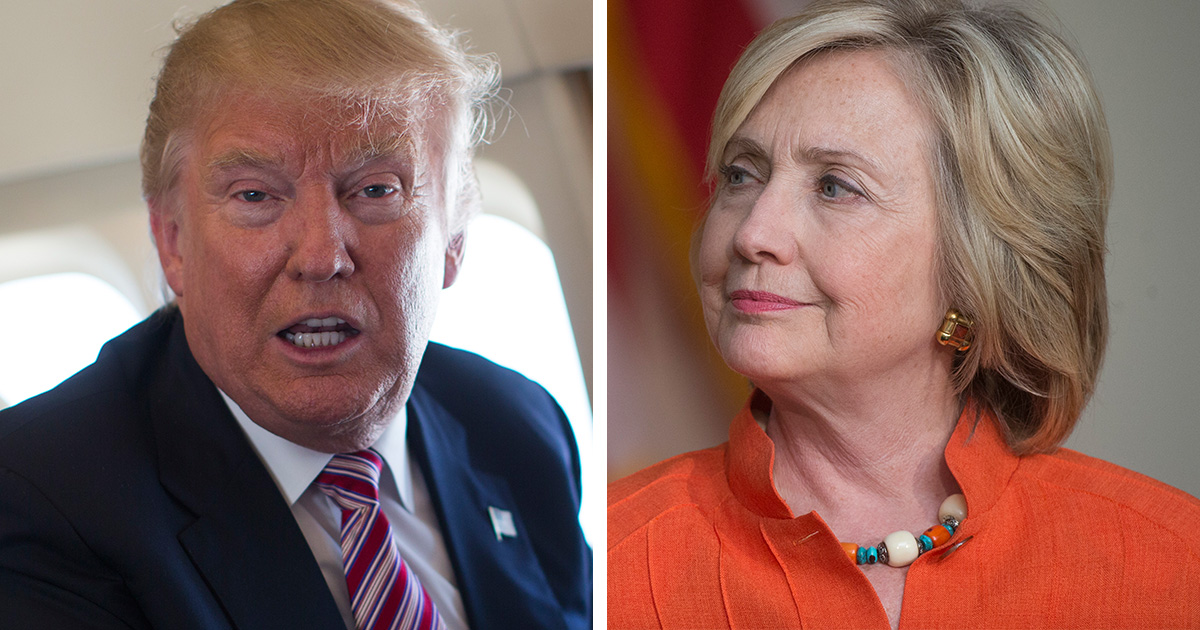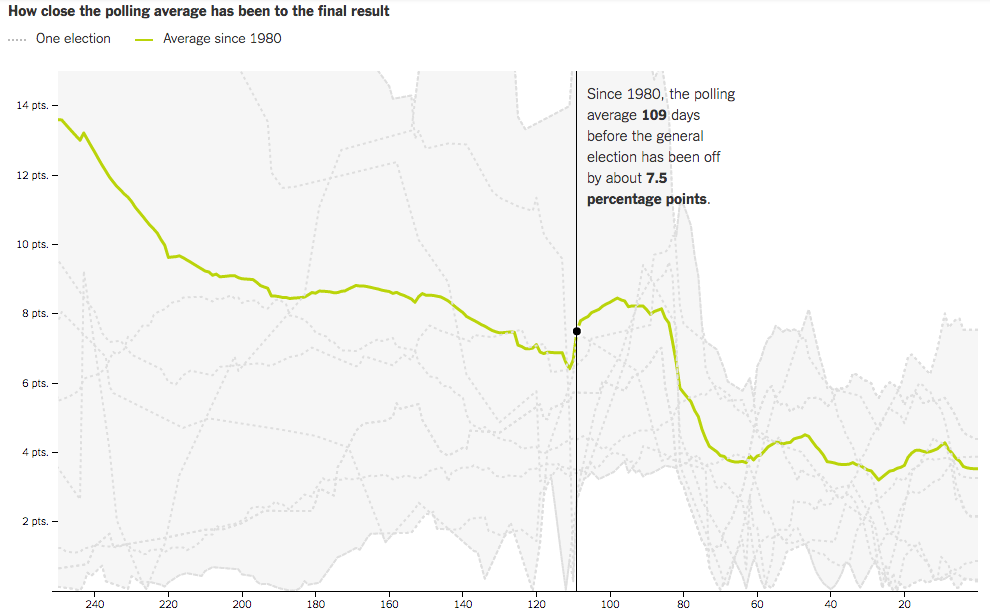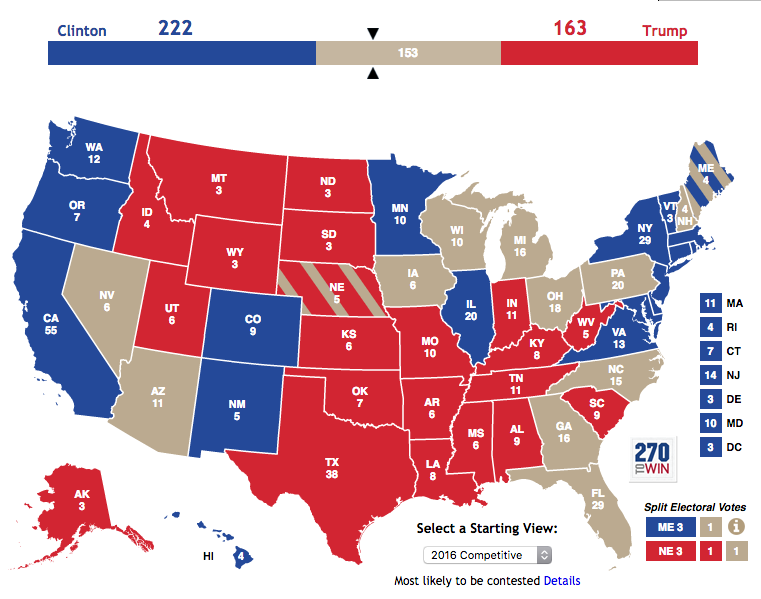Why You Shouldn't Trust National Polls

By:
With less than 60 days until Election Day, the nation's eyes are fixed on an ever-changing series of numbers that are meant to predict the outcome of the 2016 election. But if you're looking at national polls exclusively, you're unlikely to learn much about the state of the presidential race.
 AP/Evan Vucci, AP/Jae C. Hong - apimages.com
AP/Evan Vucci, AP/Jae C. Hong - apimages.com
Even at this point — two months from the big day — national polls can be misleading, and as The New York Times reports, that's always been the case. Analyzing average national polls from every election since 1980, the Times found that the margin of error typically hovers around four points at this stage. (And it's probably not going to get much more accurate, as you can see for this chart.)
 The New York Times - nytimes.com
The New York Times - nytimes.com
So where do Donald Trump and Hillary Clinton stand today? National polls show a close contest between the presidential candidates, with Clinton pulling ahead by about three points, according to RealClearPolitics. But if you really want to understand how November is likely to play out, you should consult state polls.
"[O]ur model perceives an increasing conflict between state and national polls," FiveThirtyEight's Nate Silver wrote last month. This can be problematic, because while national polls may be rough indicators of the popular vote, they don't account for the role of the Electoral College in the presidential race. To assess the outcome of Election Day, it's important to recognize the influence of swing states with large numbers of electoral votes.
 270ToWin - 270towin.com
270ToWin - 270towin.com
As ATTN: previously reported, Trump's chances at victory hinge, to a large extent, on how battleground states vote this November — specifically Ohio, Pennsylvania, and Florida. State polls show that Clinton's lead over Trump in these states has narrowed since August. The candidates are tied at 47 percent in Florida; Trump is pulling ahead by one point in Ohio (with 46 percent to Clinton's 45 percent); and Clinton has a five point advantage over Trump in Pennsylvania, USA Today reports.
Though the race is tightening, it appears less close (and less variable) at the state level. The popular vote (national polls) certain reflect broader trends, as Silver pointed out, but state polls are arguably better metrics for evaluating the race, especially as we approach November 8.
